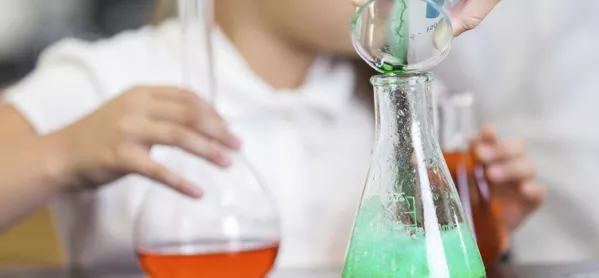As concerns grow about teacher shortages following the release of TES’ special report into the teacher supply crisis, the question of how we can better recruit and retain staff is becoming ever more pressing.
The issue is particularly acute in science, where competition for graduates is perhaps at its sharpest.
But why? After all, there’s considerable money invested in our science education, both in terms of its provision in primary and secondary schools and by government trying to stem the shortage of good quality science teachers leaving the profession and encouraging good potential teachers to enter it.
Teaching science effectively to guarantee a proper understanding of the subject requires routine and regular practical work. This means having relevant subject knowledge, a huge range of experimental procedures and apparatus, not to mention the teaching experience and confidence to deliver it meaningfully in the classroom. Unfortunately, in the majority of cases, not all of these essential elements are available all of the time, which leads to disengaged students and teachers. It’s a vicious circle and one that’s proving hard to break.
However, there is a viable solution to hand but it’s been widely overlooked. By embedding proper support to science teaching and more practical lessons in primary schools, the major pain points for teachers and students - at primary and secondary - will be eased considerably.
But with the vast majority of primary teachers being non-science specialists, to make it work they need much more practical support to give them the confidence and resources necessary. This calls for stimulating routine science teaching CPD throughout the year; fun and inspiring schemes of work and lesson plans; all of the science equipment they need for their classes to work in pairs; easy access to experienced colleagues and online resources to seek advice and supplement their lessons.
A tall order, but such an approach is affordable. By using science to develop cross-curricular links across the whole school, the budget can be allocated from several components of a primary school’s budget, including training, learning resources across several subjects and use of pupil premium (and sometimes PTA funding).
Maths and English lessons can draw upon rich science activities, helping to develop creative writing, robust debating and reasoning skills from evidence students have generated from their experiments. There are also opportunities to create further links to design and technology, art, music, history and geography lessons.
To achieve high-quality results and deliver an effective science curriculum, a realistic budget for an average single form entry, based upon the observations above, should be at least £6,000 per year. This would provide for a minimum of one staff science teaching CPD day per annum for all teachers and associated TAs in key stage 2; a wide range of science equipment sufficient for all pupils to work in pairs; as well as all necessary IT licences.
What would be the benefits of such an approach? After four years, more pupils will enter the secondary phase fully equipped to talk the language of science and undertake independent scientific investigations with minimal help. This would mean that secondary science teachers would have to spend less time teaching the basics, which would allow them to teach more exciting and engaging science lessons.
As a result, disruptive behaviour would become less of an issue because students would be engaged in their lessons, allowing girls, particularly in mixed schools, not to be put off science because of poor class behaviour. And ultimately teachers would become far less stressed about delivering science lessons, and would actually enjoy planning memorable science lessons with the necessary “wow” factor. They would then become effective at ensuring pupils learn more and properly develop their critical thinking and problem-solving skills.
A systematic approach to supporting practical science teaching at primary level will ultimately mean more pupils excelling at GCSE, and electing to study science at A-level and degree level. In turn, the country will gain more scientists, with many, hopefully, returning to education. This is when investment in science really starts to pay for itself.
Dan Sullivan is a former head of science at a secondary school and managing director of Empiribox Primary Science Trust
Want to keep up with the latest education news and opinion? Follow TES on Twitter and like TES on Facebook
